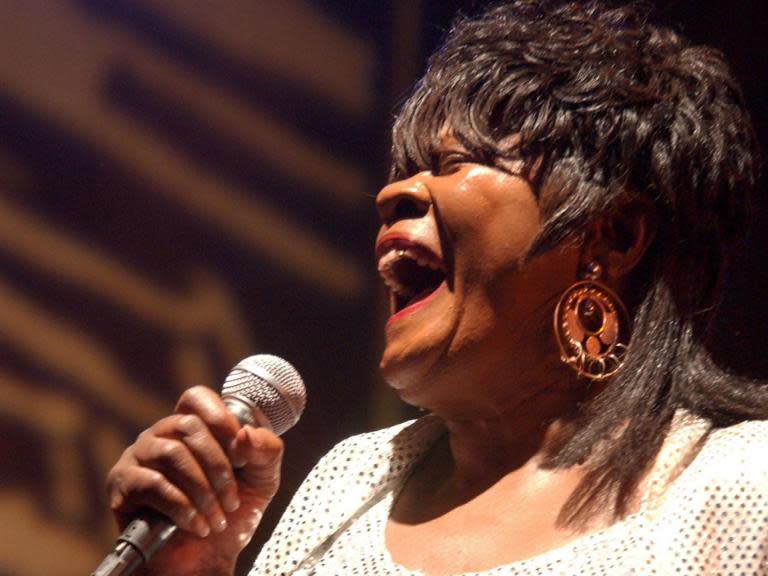A Life in Focus: Koko Taylor, Chicago blues scene queen who became a trailblazer for women
Known as the “Queen of the Blues”, Koko Taylor brought both a raw intensity and a southern earthiness to the Chicago blues scene. Her gritty vocals and consummate showmanship won her adulation from generations of fans and served to inspire a clutch of female blues artists, Shemekia Copeland and Susan Tedeschi among them, who have often struggled for recognition within a genre long dominated by men.
She was best known for the 1965 hit, “Wang Dang Doodle”, a number written by Chess Records’ producer, bassist and in-house songwriter Willie Dixon and recorded, in 1962, by Howlin’ Wolf. Taylor had initially been reluctant to record the song on the grounds that she thought it risque, but the combination of her powerful delivery and the bell-like guitar work of Buddy Guy propelled their recording to classic status.
It was her voice, in particular, that lingered in the mind, with Dixon later remembering their first meeting and her initial comment to him: “I can sing but every time I go to somebody and sing, they tell me they don’t like this growl, that heavy part of my voice.”
She was born Cora Walton to sharecropper parents in the southwestern corner of Tennessee; the sobriquet Koko deriving from a childhood fondness for chocolate. Exposed to both the gospel music she heard in church and the blues played by DJs such as BB King and Rufus Thomas on the radio stations of neighbouring Memphis, she found herself increasingly drawn to the latter. She and her siblings formed a band, playing secretly on an array of homemade instruments that included a guitar fashioned from bailing wire and nails.
At the age of 18 she set off for Chicago with her future husband, Robert “Pops” Taylor, later recalling that they headed for the Windy City with 35 cents and a box of Ritz crackers to their name. Once there, they made their home on the city’s South Side; he worked as a packer and she as a cleaner for a wealthy white family. They also became regular fixtures at many of the area’s blues clubs and she began to sit in with blues legends such as Muddy Waters and Howlin’ Wolf.
In 1963 she came to the attention of Dixon, who recorded her for the now-forgotten USA Records before signing her to Chess. Her first session for the label resulted in “I Got What It Takes” (1964), a now-classic side that features guitar contributions by Buddy Guy and Robert Nighthawk, and a superb solo by harmonica wizard “Big” Walter Horton. She recorded two albums and a handful of singles for Chess, but her tenure coincided with a downturn in the label’s fortunes, with her million-selling version of “Wang Dang Doodle” proving to be its final top 10 R&B hit.
She briefly jumped to Dixon’s Yambo label, but an appearance at the Ann Arbor Blues and Jazz Festival in 1972, recorded and released by Atlantic, brought her music to a broader, mainstream audience. In 1975 she signed with Bruce Iglauer’s Alligator Records, netting a Grammy nomination with her first disc for the label, I Got What It Takes (1975). She would remain with Alligator for the rest of her career, accumulating another seven Grammy nominations and a win, in 1984, for her work on the disc Blues Explosion.
Key albums from this era include The Earthshaker (1978), From the Heart of a Woman (1981), An Audience with Koko Taylor (1987), Jump for Joy (1992) and Royal Blue (2000). Her final album for the label, Old School, was released in 2007, with one of its tracks, the self-penned “Gonna Buy Me a Mule” going on to be named Song of the Year by the Blues Foundation.
Although temporarily sidelined by a near fatal road accident in the late Eighties, Taylor proved a battler. She toured exhaustively with her band, Blues Machine, continued to record and appeared in both David Lynch’s offbeat Wild at Heart (1990) and Blues Brothers 2000 (1998), a futile attempt by director John Landis to tap into the cult success of The Blues Brothers (1980). She also received a clutch of awards including, in 1997, induction into the Blues Hall of Fame and, in 2004, a National Heritage Fellowship from America’s National. She made her last public appearance in May when she performed at the Blues Foundation’s Awards in Memphis and collected a record 29th trophy from that organisation.
When asked what the blues meant to her, her reply was typical of a performer who for 50 years had consciously eschewed the stereotypically hard-living approach to life of a veteran blues musician: “Blues is my life. It’s a true feeling that comes from the heart, not just something that comes out of my mouth. Blues is what I love, and singing the blues is what I always do.”
Cora Walton (Koko Taylor), singer, born 28 September 1928, died 3 June 2009

 Yahoo News
Yahoo News 

